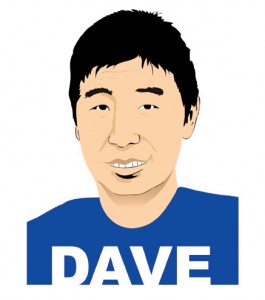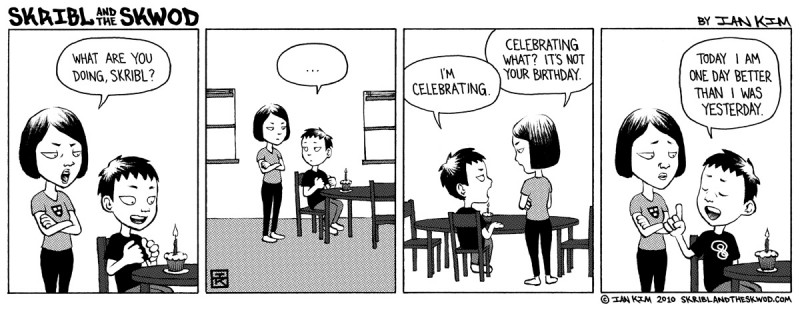
by David Yoo
Before my son was born I was conflicted as to whether I wanted him to look distinctly biracial—a balanced combination of Korean mixed with his mother’s Irish features— or full-blooded Korean like me. The reason I was torn was because we live in a similarly white bred town to the one I grew up in, and my initial instinct was that I didn’t want him to have to deal with all the baggage that comes with looking different in a predominantly white New England neighborhood, because then he’d likely develop a deep ambivalence or self-loathing toward his ethnicity the way I did growing up.
Therefore, I decided that I wanted him to look blatantly mixed-race, figuring it would make life easier for him. I reasoned he’d be able to navigate both the white world and the Asian world with equal ease. Plus, you ever heard of that thing called “white privilege?” Well, my son could claim half of that. Alas, when my son was born, he looked exactly like me: his eyes, his nose and the way his arms looked kind of buff but were utterly devoid of muscle. And I felt premature sadness for all the crap he’d have to endure as the minority Asian-looking kid in a decidedly Anglo-Saxon community in the United States.
That is, until I met John.
Last month, I attended a holiday dinner and I ended up sitting next to John, a half-Korean, half-white guy—just like my son! I suddenly remembered how quietly envious I’d been of the lone biracial guy during my college days—he looked like Brandon Lee of The Crowand all the ladies wanted to jump him. I sat there staring at John during dinner, happily picturing my son, who has gradually started to look more mixed-race as the months pass. But as the night wore on, I watched this guy vacillate between being deeply ambivalent about his Asian side and pretending he wasn’t white. He not-so-casually mentioned to me at least five times that people were always stunned when they found out he was half-Asian, that they mistook him for being Italian since he had an olive complexion. Then a minute later, I watched him chastise the white guy on the other side of the table for having the ignorant gall to suggest that the udon noodles at the Porter Exchange mall were remotely authentic.
“Aren’t udon noodles Japanese?” I asked John.
His eyes flickered.
“Yeah, and the Chinese invented spaghetti before the Italians, which I’m always getting mistaken for, since I’m so tan,” he whispered to me for the sixth time.
On the drive home I explained to my wife how confused I felt: biracial John was actually even more ambivalent about his ethnicity than I’d ever been as a kid, thereby debunking my theory that being blatantly mixed-race would make life so much easier for my son.
“It’s not how you look on the outside that dictates how ambivalent you‘ll become,” my wife asserted. “What determines it, then?” I asked. “It’s how messed up you are on the inside that dictates it, and we have every reason to believe that Griffin will turn out just fine, because my sane genes balance your crazy ones out,” she explained. “You and John should go bowling or something.”
Touché.







